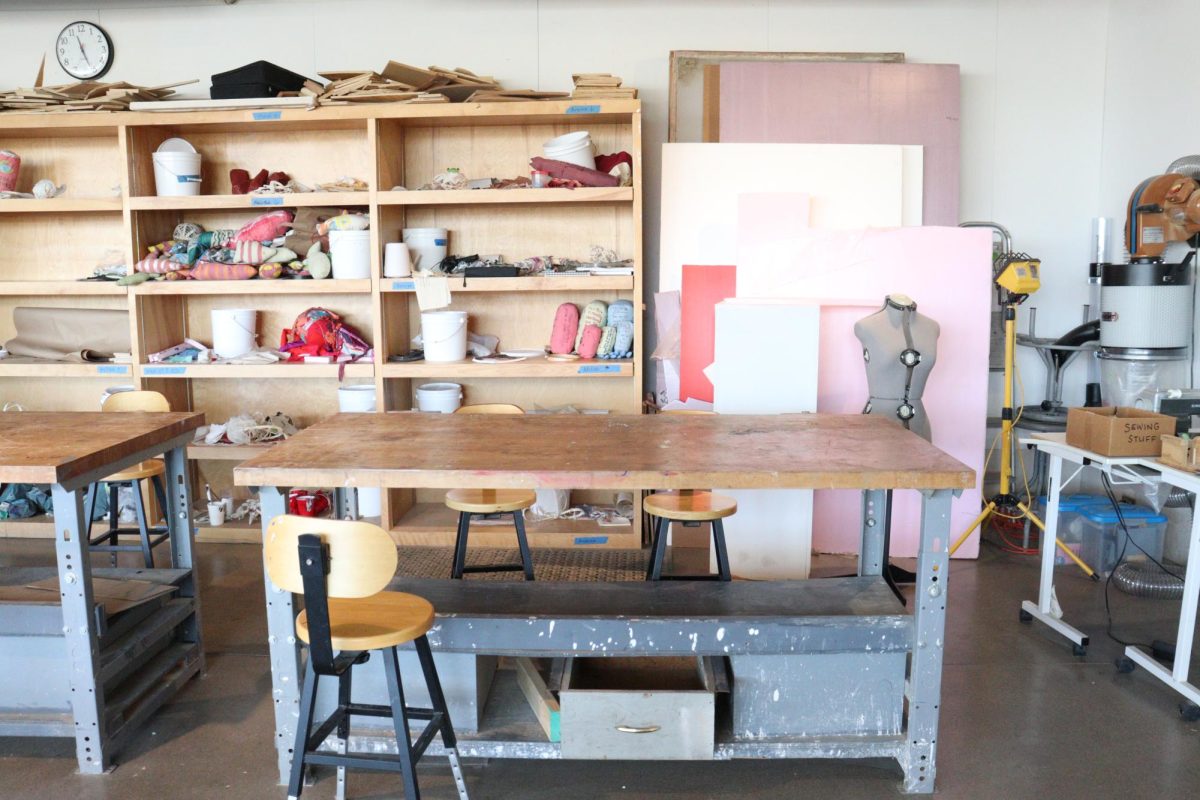
Katelyn Johnson
Three-hundred and seventy eight students enrolled in studio art classes for the 2024-25 academic year, the highest number in five years.
There is an increase in interest in studio art at Grinnell – 378 students have enrolled in studio art classes in the 2024-25 school year, the most at the College in five years.
Department Chair and Professor of Studio Art Andrew Kaufman said that the rise in increase in studio art could be attributed to students’ interests in physical creation following COVID.
“There’s been a growing hunger for non-digital ways of working,” Kaufman said. “Every time that we open a section of ART-111 or Drawing … we’re pre-enrolled with at least 40 bodies.”
Student interest may also be attributed to navigating new professional pathways within art industries. Some students say that they contend with financial concerns when deciding whether to major in studio art, often resulting in some students double majoring.
Chris Nguyen `27, an economics and studio art double-major, said that he has considered going into marketing or advertising, two professions where his interests in economics and art intersect and which could both provide a stable source of income.
“There is a lot of money there,” Nguyen said. “It was weird because I didn’t even think of it as a career.”
Nguyen attributes some of his professional blindspots to Grinnell’s liberal arts education, where the studio art department is broad and students do not specialize, instead taking classes dealing in a variety of mediums.
Professor Kaufman said that this opportunity to explore widely within art, as well as in tandem with other disciplines, only benefits young professionals and artists.
“I think what studio art does really well is it gets students thinking about the intersection of physical things and concepts from other disciplines,” Kaufman said.
Similarly, Professor of Studio Art Emily Yurkevicz said she sees the benefits of the diverse range of opportunity that Grinnell’s liberal arts curriculum provides. Furthermore, she said that expertise in art, as well as a range of other subjects, only enhances one’s professional and academic career.
“Go be an expert on something else,” Yurkevicz said. “Bring that contact back into your work, that makes your work so much more advanced in its content and concept, and it also gives you the opportunity to see the world from a number of different angles.”
Yurkevicz acknowledges the struggles of monetizing a profession in the arts but said that she found creative ways to make ends meet nonetheless, sometimes going to bed at 3 a.m. and waking up at 7 a.m. for work, but not regretting it at all.
“When I first graduated, I was a studio manager for a design studio,” Yurkevicz said. “I did that for about a year before I was ultimately promoted to be a designer. At the same time, I had my own practice that I did on nights and weekends. I also started a small business and made and sold things at New York City-based craft buyers and flea markets.”
In addition to the financial and physical aspects of studio art, for some students, the ease that the studio brings keeps drawing them back. Julia Stebbins `28, an intended biology and studio art double-major, said that being in the studio doing art helps her take her mind off of school.
“I took my first ART-111, intro to the studio class, and I kind of just fell in love with it,” Stebbins said. “[When] I get into my art class or studio, I just completely immerse myself in my art.”
Editor’s note: This story has been updated to correct the spellings of Nguyen and Yurkevicz. Updated April 4 at 9:51 p.m.